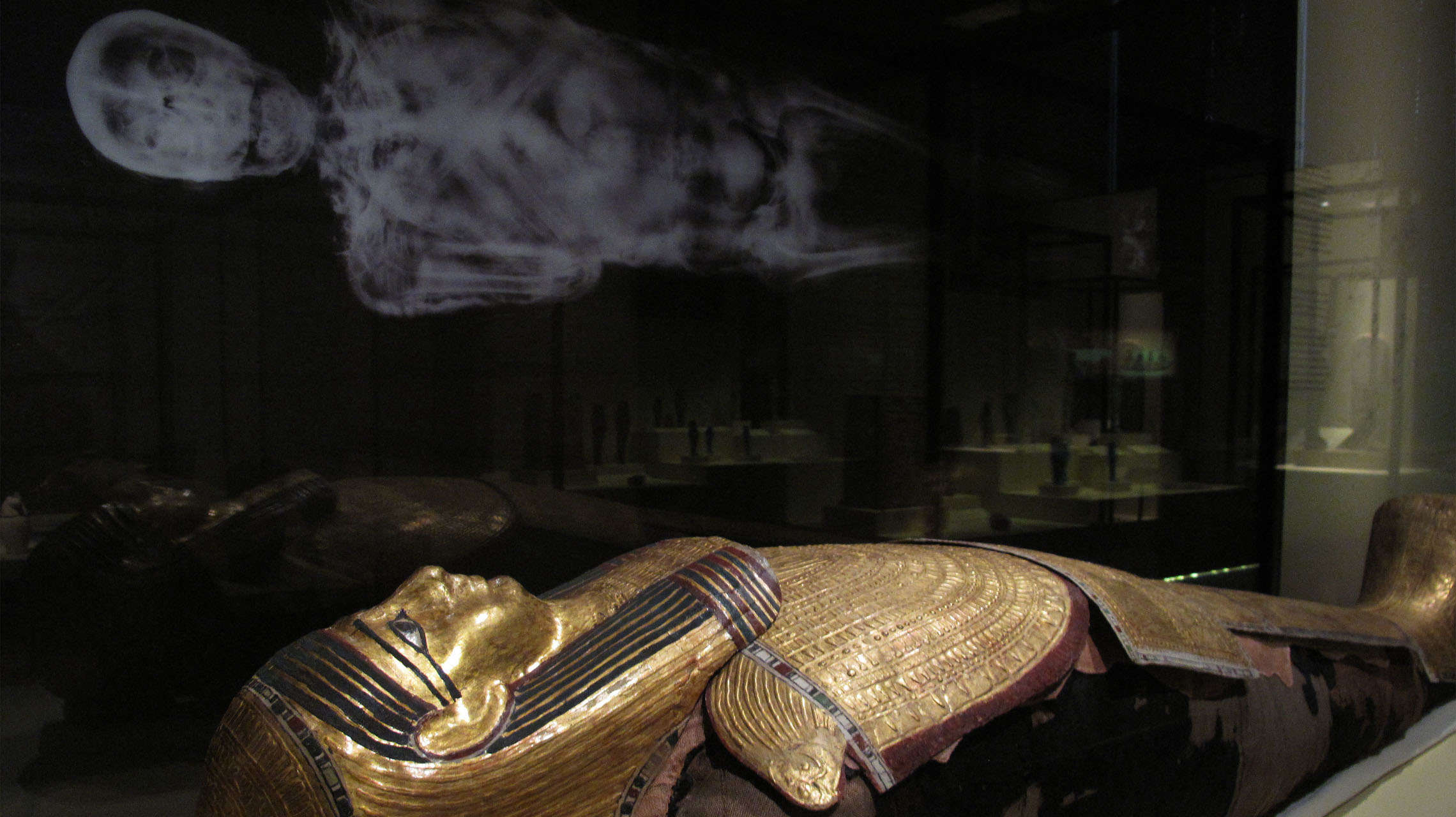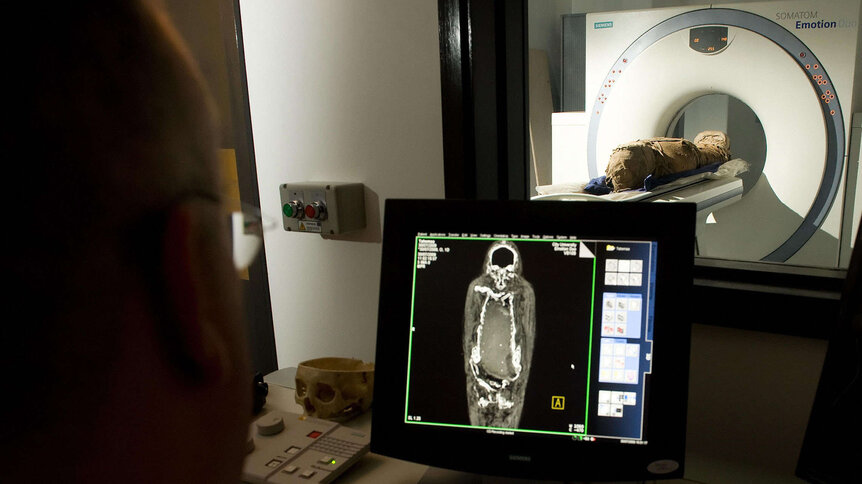Create a free profile to get unlimited access to exclusive videos, sweepstakes, and more!
The first pregnant mummy ever found in Egypt has been expecting for almost 2,000 years

When a team of scientists used CT scans to virtually unwrap a mummy whose coffin had been inscribed with the name of male priest Hor-Djehuty, it didn't seem to be who it was supposed to be. That was hardly the most shocking thing about this find, though.
Archaeologist and anthropologist Marzena Ożarek-Szilke of the University of Warsaw led a team of researchers who were just about to finish their investigation on the mummy — whose skeleton was somewhat delicate for a man — when something came to their attention. They were already certain from the scans that this was the body of a woman. What they didn’t expect was something that looked like a tiny foot inside her abdomen.
Ożarek-Szilke’s husband, an Egyptologist, was the first to notice as the father of three children. More scans and X-rays revealed that this woman had died pregnant.
“This mummy provides new possibilities for pregnancy studies in ancient times, which can be compared with and related to current cases,” the scientists said in a study recently published in Journal of Archaeological Science, adding that “This specimen sheds a light on an unresearched aspect of ancient Egyptian burial customs and interpretations of pregnancy in the context of ancient Egyptian religion.”
What seemed to be a case of mistaken identity turned out to be the first pregnant mummy ever found in Egypt. Because current technology is advanced enough to see beyond the wrappings, the mummy of this woman, whose name remains unknown, never needed to be unwrapped. She had been born into the elite class of Thebes (which is probably why she could afford a decent mummification and was found among the royal tombs), and radiology revealed she had been sent off to the afterlife with many magical amulets. She was between the ages of 20 and 30 and around 26 to 30 weeks pregnant. Though she was embalmed, the fetus had been left inside her untouched, but why?
Ancient Egyptians viewed naming as a person’s very essence. The souls of the dead could only enter the afterlife if they were named. Unnamed souls would be forever lost and earthbound, wandering in the ether. The only way to ensure passage for the unnamed was attachment to someone who was named. This is why it is believed that the fetus was neither removed nor mummified because so long as it remained in the mother, even after death, it was seen as a part of the mother’s body. It had no name because it had not yet seen anything outside the womb. Embalmers left it in the mother so it would pass to the next world as a part of her.
However, if the fetus was left inside the mother because of its lack of personhood through the eyes of the ancient Egyptians, then what can explain the two mummified fetuses that would have been the daughters of King Tutankhamun if they had actually been born? Tutankhamun’s queen, Ankhesenamun, miscarried at least twice (whether she had more miscarriages earlier on in pregnancy is impossible to know). Some Egyptologists blame inbreeding. Though the miscarried fetuses had not survived, they had still left the body of the mother. They were no longer part of her body. This possibly explains the reason they were mummified. Though the fetuses were not individually named, gold bands on both coffins were inscribed with "The Osiris".
Whether this was really the reason that this mummy’s fetus was left inside her and the miscarried fetuses of Tutankhamun and Ankhesenamun were not is still hypothetical. Though the cause of death is also unknown, it was no secret that the mortality rate was high for pregnant women in Ancient Egypt, who prayed to Tawaret, goddess of fertility and childbirth. Many also died giving birth. Because she was embalmed with so much care, traces of blood were preserved in some of her soft tissues, and examining those could at least prove or rule out pathogens or other toxins.
“[The pregnant mummy] opens up new possibilities of researching pregnancy in ancient times and practices related to maternity,” the scientists said. “A critical approach of interpretation of Egyptian mummies is [also] necessary, since many of them do not match their coffins.”



























